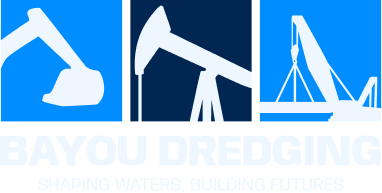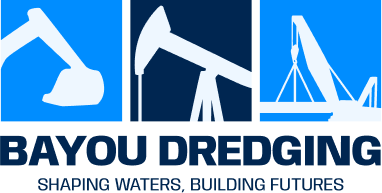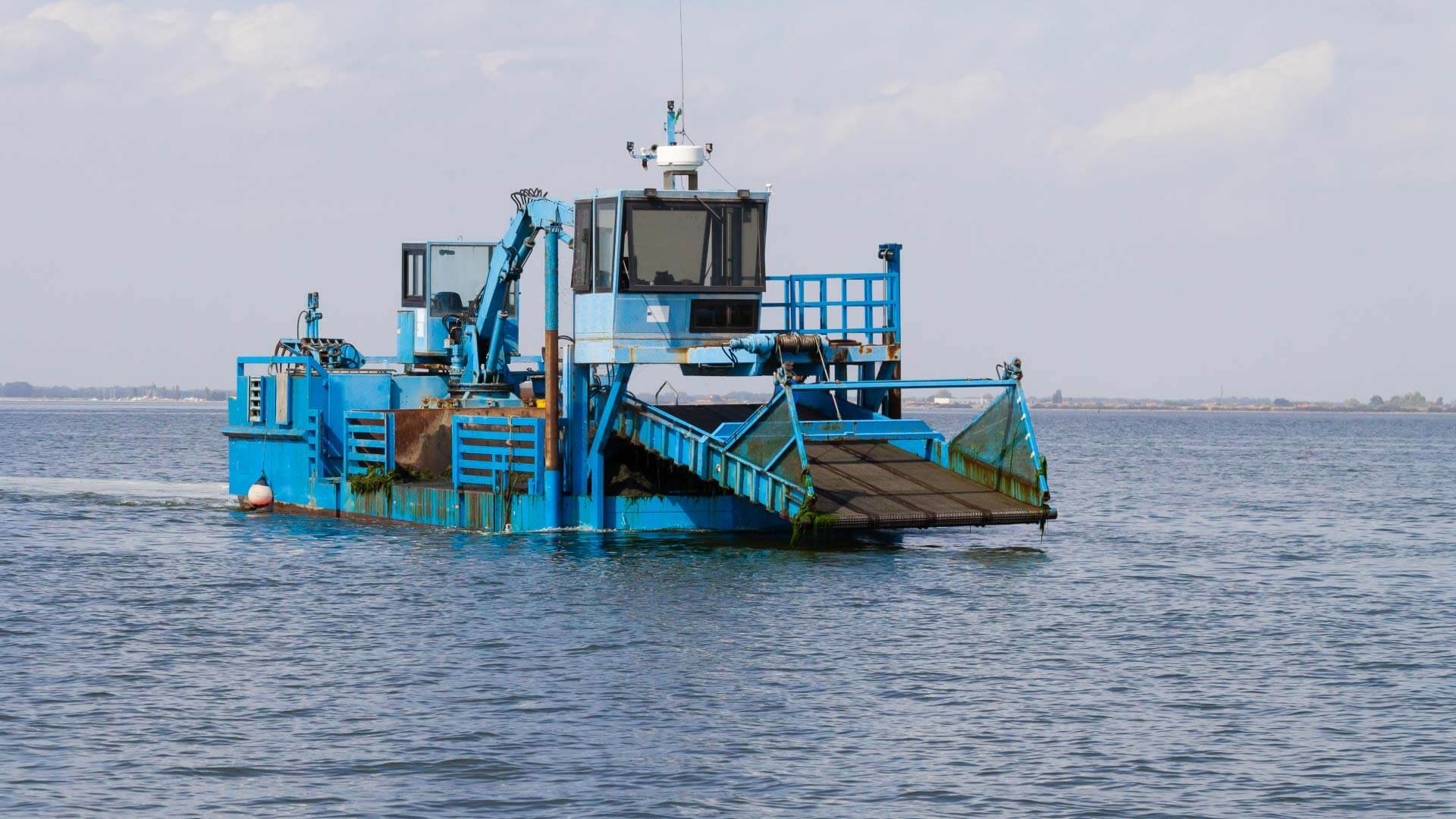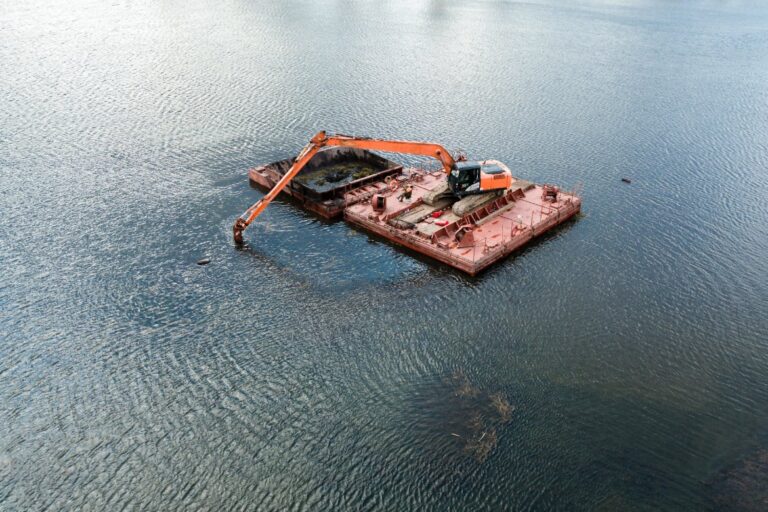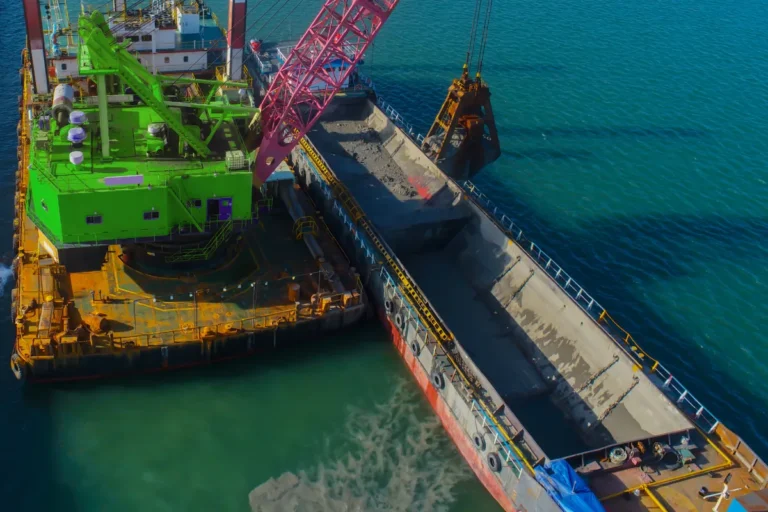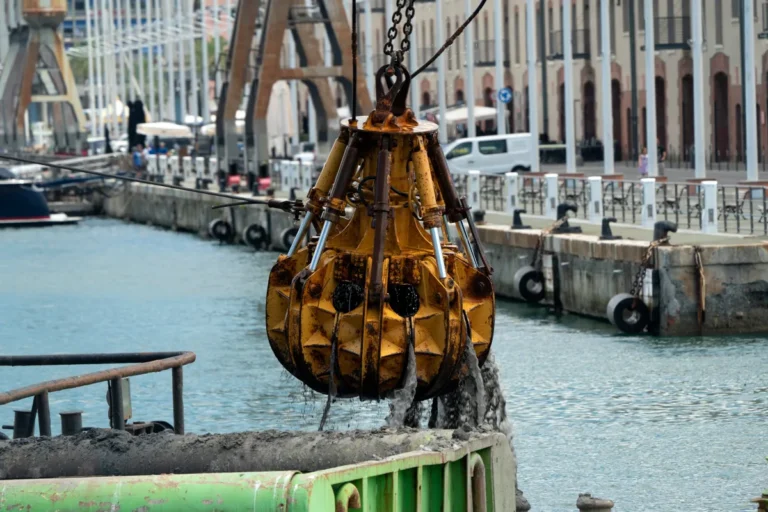Lagoon dredging is a vital process for maintaining the efficiency and functionality of various types of lagoons, including industrial, agricultural, and wastewater treatment lagoons. Over time, these lagoons accumulate sediment, organic matter, and contaminants, which reduce their holding capacity and impair their ability to treat and manage wastewater effectively. Regular dredging helps remove these accumulated materials, restoring the lagoon’s capacity and preventing issues such as overflow, poor water quality, and environmental hazards. In industrial lagoon dredging, sediments often contain harmful substances like heavy metals, hydrocarbons, and other pollutants, which must be carefully managed to avoid environmental contamination. By removing these materials, dredging improves water quality, reduces foul odors caused by anaerobic conditions, and prevents the release of toxic gases like hydrogen sulfide and methane. Effective dredging ensures that lagoons continue to operate efficiently while reducing long-term maintenance costs.
Different types of lagoons require dredging to maintain proper functionality. Industrial lagoons, used in manufacturing and processing industries, often accumulate hazardous waste that needs to be carefully removed to comply with environmental regulations. Agricultural lagoons store animal waste and runoff, where dredging helps prevent nutrient overload and contamination of nearby water sources. Wastewater treatment lagoons, used by municipalities and industrial facilities, require dredging to remove sludge buildup that can impair water treatment efficiency. Stricter environmental regulations and increased awareness of the ecological impact of untreated wastewater drive the growing need for lagoon dredging. However, dredging can have significant environmental impacts if not properly managed, such as disturbing aquatic habitats, increasing turbidity, and releasing trapped contaminants into the water column. To minimize these risks, lagoon dredging must comply with local, state, and federal regulations, which often include guidelines on equipment use, timing, and sediment disposal.
Environmental Impact of Lagoon Dredging
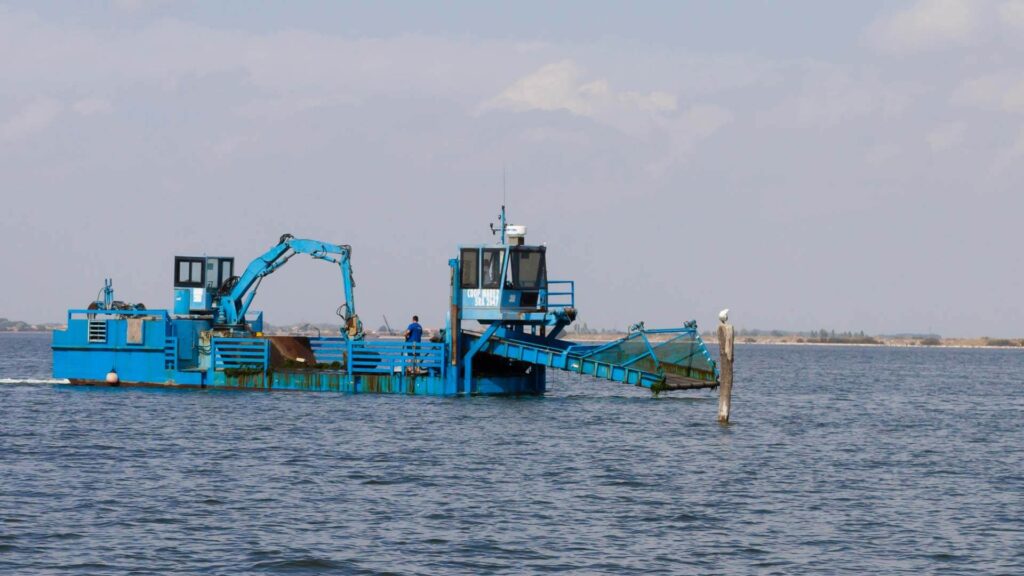
Lagoon dredging is essential for maintaining the capacity and functionality of industrial, agricultural, and wastewater treatment lagoons. However, if not properly managed, the dredging process can significantly impact the local environment. The physical removal of sediment and sludge from the lagoon floor can disrupt aquatic ecosystems, degrade water quality, and release harmful contaminants into the surrounding environment. Understanding these potential impacts is critical for implementing effective dredging strategies that minimize ecological harm.
Disruption to Aquatic Ecosystems
Dredging for lagoons involves the mechanical or hydraulic removal of sediment, which can disturb aquatic ecosystems in several ways. The process stirs up sediment, creating suspended particles in the water column, which affects water quality and disrupts the balance of the lagoon’s ecosystem.
Impact on Water Quality (Suspended Sediments, Turbidity)
When sediment is disturbed during lagoon dredging, it increases the water’s turbidity, or cloudiness. Suspended sediments reduce light penetration, which impacts aquatic plants’ photosynthesis and lowers oxygen levels. Increased turbidity can also clog the gills of fish and other aquatic organisms, making it difficult for them to breathe.
Additionally, suspended sediments may carry harmful contaminants such as heavy metals, nutrients (like nitrogen and phosphorus), and organic pollutants. When these substances are reintroduced into the water column, they can lead to eutrophication (excessive nutrient buildup), algal blooms, and long-term water quality degradation.
Disturbance of Aquatic Habitats and Species
Industrial lagoon dredging can physically alter the structure of aquatic habitats by removing plant life, altering substrate composition, and destroying nesting and feeding areas for fish and invertebrates. Dredging noise and sediment disturbance can also drive aquatic species away from their natural habitats, reducing biodiversity and affecting the local food chain.
For example, species that rely on clean substrate for spawning may lose their breeding grounds due to sediment accumulation or habitat alteration caused by dredging. Additionally, dredging operations that increase suspended particles in the water can impair the visibility and foraging behavior of predator species.
Potential Oxygen Depletion and Release of Contaminants
When organic material and sludge are disturbed during lagoon dredging, the microbial decomposition of organic matter can increase, leading to higher biological oxygen demand (BOD). This increased demand for oxygen can deplete dissolved oxygen levels in the water, creating hypoxic (low oxygen) conditions that threaten fish and aquatic life.
Moreover, the disturbance of anaerobic sediments can release toxic gases such as hydrogen sulfide and methane, which further reduce oxygen availability and create harmful conditions for aquatic life. Industrial lagoon dredging can also release contaminants like heavy metals, petroleum hydrocarbons, and industrial chemicals that were previously trapped in the sediment.
Sediment Management and Disposal
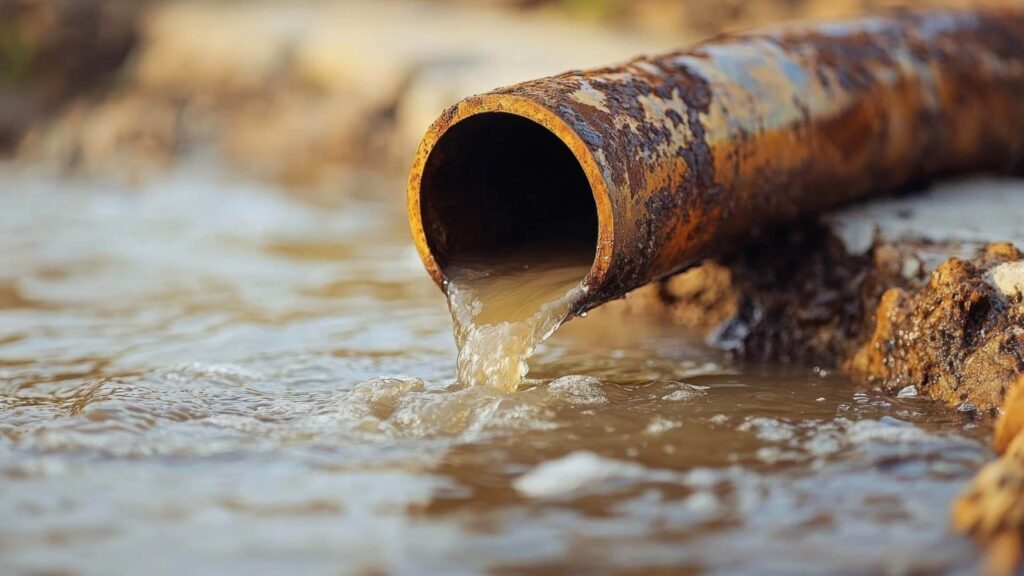
Proper sediment management and disposal are essential to minimize the environmental impact of lagoon dredging. Sediments removed from lagoons often contain a mix of organic material, nutrients, and potentially hazardous substances that need to be handled according to environmental regulations.
Types of Sediment Found in Industrial Lagoon Dredging
Sediment composition varies depending on the type of lagoon and the source of inflow. In industrial lagoons, sediments often include:
- Heavy metals (e.g., mercury, lead, and cadmium)
- Petroleum-based pollutants
- Organic waste and nutrient-rich sludge
- Chemical residues from manufacturing processes
Agricultural lagoons typically accumulate nutrient-rich sediments containing nitrogen, phosphorus, and organic matter, which can contribute to eutrophication if not properly managed. Wastewater treatment lagoons may contain a mix of organic material, heavy metals, and pathogens.
Proper Handling and Disposal of Contaminated Sediments
Sediment dredged from industrial lagoons must be tested for contaminants before disposal. Depending on the results, sediments may require specialized handling, such as:
- Dewatering and drying to reduce volume and weight
- Treatment to neutralize hazardous substances
- Transportation to licensed disposal facilities
- Use in land reclamation or soil conditioning (if safe)
Some industrial lagoon dredging projects use geotextile dewatering bags to separate water from solids, reducing handling costs and improving sediment stability before disposal.
Risks of Resuspension and Downstream Contamination
If not properly contained, dredging for lagoons can result in sediment resuspension, where fine particles are carried downstream and deposited in nearby water bodies. This can lead to:
- Pollution of adjacent rivers, lakes, and wetlands
- Increased turbidity and sedimentation in downstream ecosystems
- Spread of contaminants into drinking water sources and agricultural lands
Silt curtains, turbidity barriers, and real-time water quality monitoring systems are often used during dredging operations to minimize these risks.
Impact on Water Chemistry
The chemical composition of lagoon water can be significantly altered during and after dredging, especially in industrial lagoons where sediment contains high levels of pollutants and nutrients.
Changes in pH and Nutrient Levels
Lagoon dredging can disturb the chemical balance of the water, altering pH levels and nutrient concentrations. The release of ammonia, nitrates, and phosphates from dredged sediments can cause nutrient spikes, leading to algal blooms and oxygen depletion.
High nutrient levels also promote the growth of harmful cyanobacteria, which produce toxins that are dangerous to fish, wildlife, and human health. pH changes can affect the solubility of heavy metals, increasing their bioavailability and toxicity to aquatic life.
Release of Heavy Metals and Organic Pollutants
Industrial lagoon dredging can mobilize heavy metals such as lead, cadmium, and mercury, which accumulate in sediment over time. When released into the water, these metals can bioaccumulate in the food chain, posing long-term ecological and human health risks.
Organic pollutants such as petroleum hydrocarbons, polychlorinated biphenyls (PCBs), and pesticides may also be released during dredging, increasing toxicity levels in the water and sediment. These substances are known to have carcinogenic and endocrine-disrupting effects on aquatic organisms and humans.
Impact on Biological Oxygen Demand (BOD) and Chemical Oxygen Demand (COD)
BOD and COD levels increase when organic material is disturbed during dredging. Higher BOD indicates that more oxygen is needed for microbial decomposition, which can lead to oxygen depletion and hypoxia in the water column.
Elevated COD levels signal the presence of oxidizable organic and inorganic compounds, which reduce water quality and create toxic conditions for aquatic life. Managing these levels through proper sediment removal and treatment is essential to maintaining lagoon health and ecological balance.
Minimizing Environmental Disruption During Lagoon Dredging
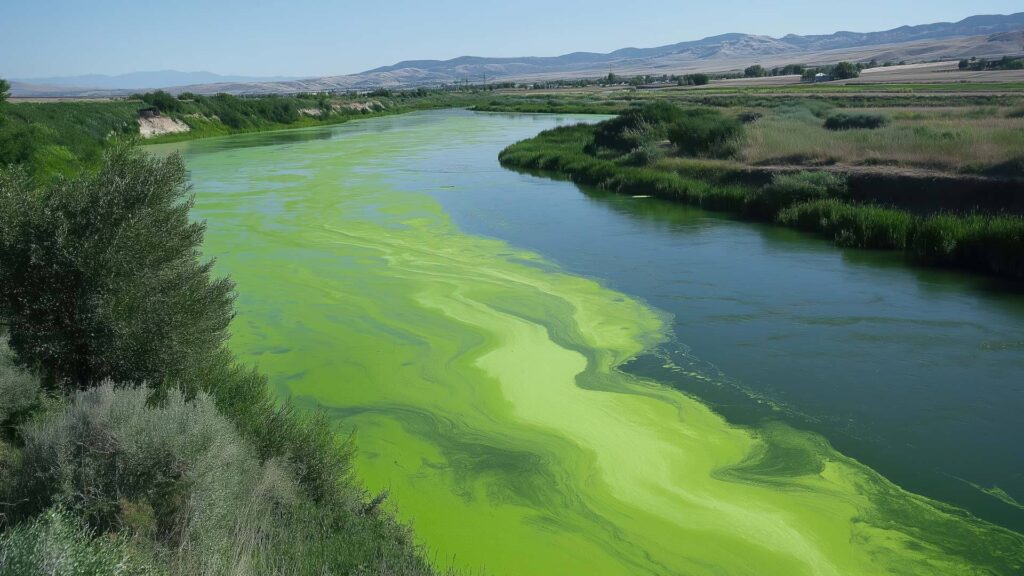
Effective lagoon dredging is not just about restoring capacity and improving operational efficiency—it’s also about minimizing the environmental impact on the surrounding ecosystem. Without proper planning and execution, dredging for lagoons can lead to increased turbidity, habitat destruction, and contamination of nearby water sources. Implementing targeted strategies to reduce environmental disruption ensures that lagoon dredging remains sustainable and compliant with environmental regulations.
Pre-Dredging Environmental Assessments
Before starting any lagoon dredging project, it is critical to conduct a thorough environmental impact assessment (EIA). A detailed assessment helps identify potential environmental risks and allows for the development of mitigation strategies to minimize ecological damage.
Conducting Environmental Impact Assessments (EIA)
An EIA evaluates how dredging activities will affect water quality, aquatic life, and surrounding ecosystems. It assesses the potential release of contaminants, changes in water chemistry, and the impact on local wildlife. A comprehensive EIA provides a roadmap for safe and efficient dredging while complying with environmental regulations.
Identifying Sensitive Habitats and Species
Dredging for lagoons can disrupt critical habitats and threaten local species if not carefully managed. Pre-dredging surveys should identify sensitive areas, such as breeding grounds, aquatic vegetation zones, and habitats of endangered species. If sensitive areas are identified, dredging schedules and methods may need to be adjusted to avoid critical breeding seasons or migration periods.
Establishing Baseline Water Quality Data
Establishing baseline water quality data before starting an industrial lagoon dredging project is essential for monitoring environmental impact. Key parameters to measure include:
- Turbidity levels
- Dissolved oxygen content
- pH and nutrient concentrations
- Heavy metal and contaminant levels
Baseline data allows operators to compare pre- and post-dredging conditions, helping to identify any negative environmental changes and adjust dredging strategies accordingly.
Use of Low-Impact Dredging Equipment
Choosing the right dredging equipment is one of the most effective ways to reduce environmental disruption. Modern dredging technology allows for more precise sediment removal, minimizing turbidity and limiting the spread of contaminants.
Selecting Appropriate Dredging Equipment
For industrial lagoon dredging, selecting the correct dredging equipment is critical to reducing environmental impact. Common types of low-impact dredging equipment include:
- Cutter Suction Dredges – Ideal for removing compacted sediments and debris while maintaining precise control.
- Auger Dredges – Excellent for targeted sediment removal, reducing the risk of resuspension and downstream contamination.
- Hydraulic Dredges – Use suction to minimize physical disturbance of the sediment bed, reducing turbidity.
Choosing the correct dredging method based on sediment composition, depth, and lagoon size ensures efficient removal while minimizing ecological harm.
Benefits of Using an Industrial Lagoon Dredging Approach with Precision Equipment
Industrial lagoon dredging with modern equipment allows operators to:
- Remove sediment more efficiently with less environmental disruption
- Target specific problem areas without disturbing surrounding habitats
- Minimize the spread of contaminants by reducing sediment resuspension
- Lower operational costs by increasing dredging accuracy
Reduced Turbidity and Sediment Disturbance with Modern Dredge Technology
Advanced dredging systems are designed to minimize sediment resuspension. Cutter suction and hydraulic dredges use precise suction and cutting mechanisms to prevent excessive stirring of the sediment bed, reducing turbidity and protecting water quality.
Implementing Silt Curtains and Barriers
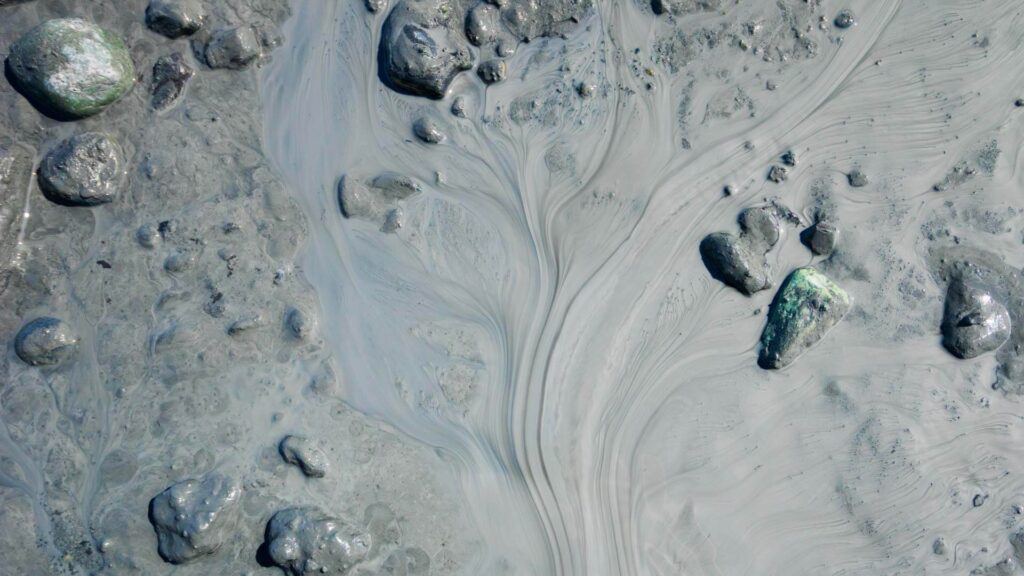
Silt curtains and barriers are essential tools for controlling sediment drift during lagoon dredging. They help contain disturbed material and prevent it from spreading into adjacent water systems and sensitive habitats.
Purpose and Function of Silt Curtains
Silt curtains act as physical barriers that trap suspended sediments, allowing them to settle naturally before they can escape into surrounding waters. They are typically made from heavy-duty, permeable fabric and anchored to the bottom of the lagoon to create a controlled containment area.
Reducing Sediment Drift and Downstream Pollution
By limiting the spread of sediment, silt curtains help prevent:
- Increased turbidity in nearby water bodies
- Contamination of downstream ecosystems with heavy metals and nutrients
- Disruption to aquatic habitats and feeding patterns
Strategically placing silt curtains around the dredging zone ensures that disturbed material remains within the work area until it can be properly removed or settled.
Installation and Maintenance Best Practices
For maximum effectiveness, silt curtains should be installed according to lagoon depth, water flow, and sediment composition. Key installation and maintenance practices include:
- Ensuring the curtain is anchored firmly to the lagoon floor
- Overlapping curtain sections to prevent gaps and sediment escape
- Regularly inspecting for tears and repositioning curtains as needed based on dredging progress
Real-Time Water Quality Monitoring
Continuous monitoring of water quality during lagoon dredging is essential for detecting changes in environmental conditions and making real-time adjustments to minimize impact.
Importance of Continuous Monitoring During Dredging
Monitoring water quality allows dredging operators to respond immediately to environmental changes, such as:
- Increased turbidity levels
- Drops in dissolved oxygen content
- Spikes in nutrient or contaminant concentrations
Adjusting dredging techniques based on real-time data helps prevent long-term environmental damage and ensures compliance with environmental regulations.
Adjusting Dredging Techniques Based on Water Quality Data
If monitoring data shows increased turbidity or declining oxygen levels, operators can modify dredging strategies by:
- Slowing down dredging operations to reduce sediment disturbance
- Adjusting suction depth and cutter speed
- Increasing the use of silt curtains and sediment containment systems
Technologies for Monitoring Turbidity, Dissolved Oxygen, and Contaminants
Modern dredging operations rely on advanced monitoring technologies to track key water quality indicators, including:
- Turbidity Meters – Measure suspended solids and water clarity in real time.
- Dissolved Oxygen Sensors – Detect changes in oxygen levels, helping operators prevent hypoxia.
- Nutrient and Heavy Metal Analyzers – Monitor the release of contaminants and nutrients from dredged sediments.
- Remote Sensing and GPS Tracking – Provide real-time location and depth data for precise dredging control.
Combining real-time monitoring with automated dredging equipment allows operators to maintain control over the dredging process while minimizing environmental impact.
Compliance Strategies for Lagoon Dredging
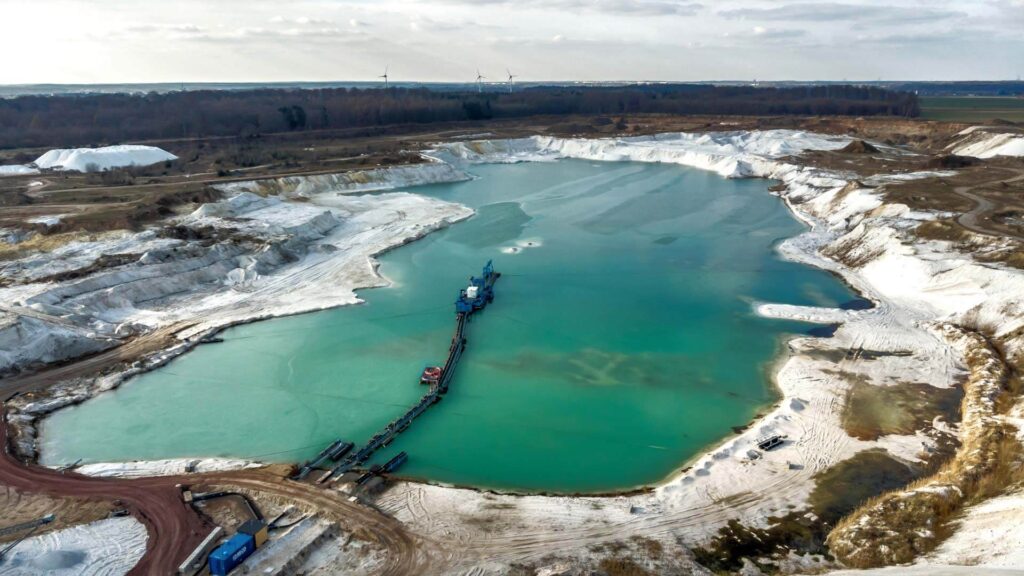
Ensuring compliance with environmental regulations is a critical aspect of any lagoon dredging project. Regulatory agencies at the local, state, and federal levels have established guidelines to protect water quality, aquatic ecosystems, and surrounding habitats during dredging operations. Failure to comply with these regulations can lead to fines, project delays, and long-term environmental damage. Developing a comprehensive compliance strategy helps minimize legal and environmental risks while ensuring the success of the dredging project.
Understanding Local and Federal Regulations
Lagoon dredging projects are subject to a range of environmental regulations designed to protect water quality, aquatic life, and surrounding ecosystems. Understanding these requirements is essential for securing permits and avoiding violations.
Overview of Environmental Regulations for Lagoon Dredging
Environmental regulations for lagoon dredging typically cover:
- Water Quality Standards – Limits on turbidity, nutrient levels, and contaminant discharge during dredging.
- Habitat Protection – Guidelines for avoiding sensitive aquatic habitats and minimizing disruption to wildlife.
- Sediment Management – Requirements for proper handling, testing, and disposal of dredged material.
- Noise and Disturbance Limits – Restrictions on operating hours and noise levels to protect local communities and wildlife.
Federal agencies like the Environmental Protection Agency (EPA) and the U.S. Army Corps of Engineers oversee permitting and environmental compliance for dredging projects in the United States. In addition to federal regulations, state and local agencies may impose additional requirements specific to local water bodies and ecosystems.
Permitting Process and Compliance Requirements
Before starting any dredge for the lagoon project, operators must obtain the necessary permits. The permitting process typically involves:
- Submitting an Environmental Impact Assessment (EIA) – Outlining the expected impact of the dredging project and proposed mitigation strategies.
- Water Quality Certification – Demonstrating that the project will not violate water quality standards.
- Sediment Testing and Classification – Determining the composition of dredged material and identifying any hazardous substances.
- Approval of Disposal Plan – Establishing where and how dredged material will be processed or disposed of.
- Wildlife and Habitat Protection Plan – Documenting how the project will minimize disruption to aquatic and terrestrial species.
Once permits are issued, regular inspections and progress reports are often required to ensure ongoing compliance throughout the dredging process.
Differences Between Industrial Lagoon Dredging and Natural Lagoon Projects
Industrial lagoon dredging typically involves more stringent regulations due to the presence of hazardous materials and pollutants in the sediment. Unlike natural lagoon dredging, which primarily addresses sediment buildup and ecological health, industrial lagoon dredging often includes:
- Testing for heavy metals, hydrocarbons, and chemical contaminants
- Specialized disposal requirements for hazardous materials
- Additional worker safety and environmental protection measures
- Greater scrutiny of water quality impact and sediment resuspension risks
Natural lagoon dredging, on the other hand, tends to focus on habitat restoration and nutrient balance, with fewer concerns about hazardous waste management.
Developing a Dredging Management Plan
A well-structured dredging management plan (DMP) is essential for meeting compliance requirements and ensuring the success of a lagoon dredging project. The DMP serves as a blueprint for dredging operations, outlining the project’s goals, methods, environmental safeguards, and monitoring procedures.
Elements of an Effective Dredging Management Plan
An effective dredging management plan should include:
- Project Scope and Objectives – Clear definition of dredging goals, target sediment removal volume, and desired water quality improvements.
- Environmental Impact Assessment – Detailed analysis of potential environmental impacts and proposed mitigation strategies.
- Equipment Selection and Operation Methods – Justification for the type of dredging equipment used and how it will minimize environmental disruption.
- Sediment Handling and Disposal Plan – Procedures for testing, transporting, and disposing of dredged material.
- Environmental Protection Measures – Use of silt curtains, real-time monitoring, and low-impact dredging techniques to reduce disruption.
- Emergency Response Plan: This plan outlines the Steps to follow in the event of equipment failure, sediment release, or other environmental incidents.
Inclusion of Environmental Risk Assessments and Mitigation Strategies
Environmental risk assessments are a key part of a dredging management plan. This includes identifying risks such as:
- Sediment resuspension and downstream contamination
- Disruption to fish spawning and migration patterns
- Oxygen depletion and increased biological oxygen demand (BOD)
Mitigation strategies may involve:
- Adjusting dredging schedules to avoid sensitive seasons
- Using low-impact dredging equipment
- Installing silt curtains and turbidity barriers
- Real-time water quality monitoring and adaptive dredging techniques
Stakeholder Involvement and Community Engagement
Stakeholder involvement is critical to the success and smooth execution of an industrial lagoon dredging project. Stakeholders may include:
- Local environmental agencies and regulators
- Community organizations and advocacy groups
- Residents and property owners
- Industry representatives and business owners
Engaging stakeholders early in the project fosters transparency and helps address concerns about environmental impact, noise, and water quality. Public hearings, open meetings, and regular project updates can build trust and support for the project.
Post-Dredging Restoration and Monitoring
Dredging for lagoons does not end when sediment removal is complete. Post-dredging restoration and monitoring are essential to ensure that the lagoon recovers fully and continues to function as intended.
Restoring Aquatic Habitats and Ecosystems
After dredging, reestablishing natural aquatic habitats is essential for maintaining a balanced ecosystem. Restoration efforts may include:
- Planting Native Aquatic Vegetation – Helps stabilize sediment and improve water quality.
- Reintroducing Fish and Aquatic Species – Supports biodiversity and restores food chain balance.
- Restoring Wetland Buffer Zones – Improves water filtration and provides wildlife habitat.
In industrial lagoon dredging, habitat restoration often involves stabilizing the lagoon floor with sediment covers or geotextiles to prevent contaminants from resuspending
Reintroducing Native Plant and Animal Species
Once water quality stabilizes, native species can be reintroduced to the lagoon. This helps reestablish the ecosystem’s natural balance and supports long-term ecological health. However, care must be taken to ensure that species reintroduction aligns with the lagoon’s natural conditions including water temperature, pH levels, and nutrient availability.
Long-Term Monitoring of Water Quality and Sediment Stability
Ongoing monitoring is essential to evaluate the long-term success of lagoon dredging and restoration efforts. Monitoring should focus on:
- Turbidity Levels – Ensuring that sediment resuspension remains low.
- Nutrient and Contaminant Levels – Detecting any spikes in nitrogen, phosphorus, or heavy metals.
- Dissolved Oxygen and pH – Monitoring for signs of oxygen depletion or acidity changes.
- Biological Indicators – Tracking the recovery of fish populations, plant diversity, and aquatic invertebrates.
Remote sensors and automated monitoring systems can provide real-time data, allowing operators to respond quickly to any signs of ecological imbalance. Long-term monitoring also ensures that any residual contaminants are contained and that water quality remains within acceptable limits.
Conclusion
Lagoon dredging is essential for maintaining the capacity and functionality of industrial, agricultural, and wastewater lagoons. However, the process comes with significant environmental responsibilities. Careful planning, the use of low-impact dredging equipment, and the implementation of silt curtains and real-time water quality monitoring are crucial for minimizing disruption to aquatic ecosystems and maintaining compliance with environmental regulations. Conducting thorough environmental impact assessments and adhering to a well-developed dredging management plan help to reduce sediment resuspension, prevent the release of contaminants, and protect sensitive habitats.
A strategic approach to lagoon dredging restores the lagoon’s operational efficiency and promotes long-term environmental health. Effective sediment management, proper disposal of dredged material, and post-dredging restoration efforts ensure that aquatic ecosystems recover and thrive. By combining technical expertise with environmental responsibility, operators can achieve successful dredging outcomes while safeguarding water quality and ecosystem balance.
